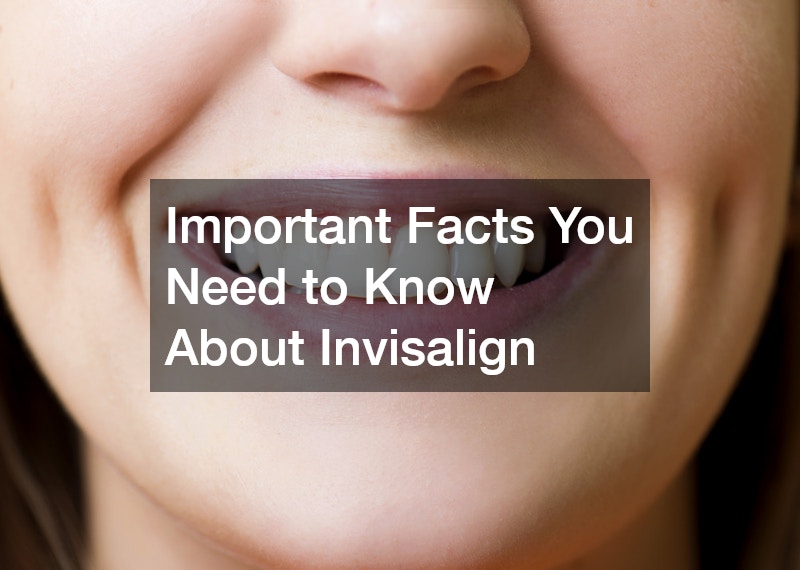
Invisalign is a revolutionary clear aligner system that presents a modern alternative to traditional braces for straightening teeth. Its popularity is soaring as more people seek discreet dental treatment options.
How does Invisalign work?
1.1 The Science Behind Invisalign
Invisalign utilizes advanced 3D computer imaging technology to create a model of your teeth and map out a precise treatment plan. The aligners gently exert pressure to move teeth into their desired positions.
Unlike traditional braces, Invisalign aligners are custom-made from flexible plastic, ensuring a snug fit over the teeth. Patients typically wear a new set of aligners every one to two weeks, gradually shifting teeth.
The technology behind Invisalign allows for precise control over tooth movement, offering predictable outcomes. This sophisticated method makes it possible to treat a wide range of dental issues effectively.
1.2 Treatment Timeline and Stages
Invisalign treatment typically spans 12 to 18 months, depending on the complexity of the case. The journey is divided into stages, with each set of aligners designed to make incremental adjustments.
Patients must wear their aligners for 20 to 22 hours a day for best results, removing them only for eating, drinking, and oral hygiene. Regular check-ins with a dentist or orthodontist ensure the treatment progresses as planned.
After completing the initial series of aligners, refinements may be necessary to achieve the desired outcome. These adjustments ensure that all noticeable imperfections are addressed.
What are the advantages of Invisalign over traditional braces?
2.1 Aesthetic Appeal and Comfort
Invisalign’s clear design offers a significant aesthetic advantage, providing a virtually invisible treatment. This makes Invisalign an appealing option for self-conscious individuals seeking orthodontic care.
The smooth plastic of the aligners enhances comfort, eliminating the irritation commonly associated with metal brackets and wires. Patients often report a more pleasant experience with Invisalign.
Moreover, the custom fit of each set of aligners reduces the risk of painful abrasions and ulcers inside the mouth. This feature significantly contributes to overall treatment comfort.
2.2 Maintenance and Oral Hygiene
One of the standout advantages of Invisalign is the ease of maintaining oral hygiene, as the aligners are removable. This allows for unobstructed brushing and flossing, supporting better dental health.
The ability to remove aligners also means no dietary restrictions, as you can eat all your favorite foods without worrying about damaging wires or brackets. Patients find this flexibility very convenient.
By preserving excellent oral hygiene during treatment, patients reduce their risk of cavities and gum disease. This ensures that their teeth remain healthy throughout the orthodontic process.
Is everyone a candidate for Invisalign?
3.1 Ideal Candidates for Invisalign
Invisalign is a suitable option for teenagers and adults with mild to moderate dental misalignments. Conditions like overcrowding, gaps, and some bite irregularities can be effectively treated with Invisalign.
Commitment to wearing the aligners as instructed is crucial for success, making responsible candidates ideal. Those willing to follow the treatment protocol experience optimal results.
Furthermore, individuals seeking a discreet method to improve their smile without the stigma associated with traditional braces often choose Invisalign. This factor enhances its appeal among various age groups.
3.2 Limitations and Considerations
While versatile, Invisalign may not be suitable for severe orthodontic cases requiring complex tooth movements. Conditions such as significant overbites or skeletal discrepancies may necessitate alternative treatments.
Furthermore, patients with existing dental work, such as bridges or implants, may face limitations with Invisalign’s effectiveness. A thorough consultation with a dental professional is essential to assess eligibility.
Patients need to be diligent in wearing their aligners; inconsistent use can prolong treatment and affect results. Compliance with treatment guidelines ensures that Invisalign can achieve its full potential.
How much does Invisalign cost?
4.1 Breakdown of Invisalign Costs
The cost of Invisalign varies based on the complexity of the dental issues and the length of treatment. Factors such as geographic location and the practitioner’s expertise also influence pricing.
Typically, Invisalign costs range from $3,000 to $8,000, paralleling the expense of traditional braces. Despite the potentially higher price, many patients value the benefits of the nearly invisible aligners.
Initial consultations with partnering dental clinics often include a detailed cost estimate, helping patients plan accordingly. This transparency in pricing aids in financial decision-making.
4.2 Insurance and Payment Plans
Dental insurance may cover part of the cost for Invisalign, similar to coverage for braces, reducing the financial burden. Patients should check with their insurers to understand their benefits.
Many orthodontists offer flexible payment plans to make Invisalign treatment more affordable. These plans can spread the cost over monthly installments, easing budget concerns.
Potential patients are encouraged to inquire about these financial options during consultations. Understanding available coverage and payment plans can make Invisalign a feasible choice for rejuvenating one’s smile.
What should I expect during and after treatment with Invisalign?
5.1 Wearing and Caring for Your Aligners
Proper care of Invisalign aligners is vital for maintaining their clarity and hygiene. Daily cleaning with a soft brush and lukewarm water prevents plaque buildup and discoloration.
It’s important to remove aligners while eating or drinking anything other than water to avoid damage or staining. This practice prolongs the lifespan of each set of aligners.
Regular follow-ups with the dental provider ensure proper fit and progress tracking. Maintaining open communication with them maximizes the effectiveness of the aligners.
5.2 Post-Treatment Retainers and Results
After completing Invisalign treatment, wearing a retainer is crucial to maintain the new tooth positions. These retainers prevent relapse, ensuring long-term stability of the results.
Patients typically need to wear retainers constantly for the first few months, gradually transitioning to overnight wear. This continued commitment strengthens the treatment outcome.
The satisfaction of a beautifully aligned smile is well worth the follow-up care. Those who adhere to retainer use and maintenance enjoy lasting benefits from their Invisalign journey.

